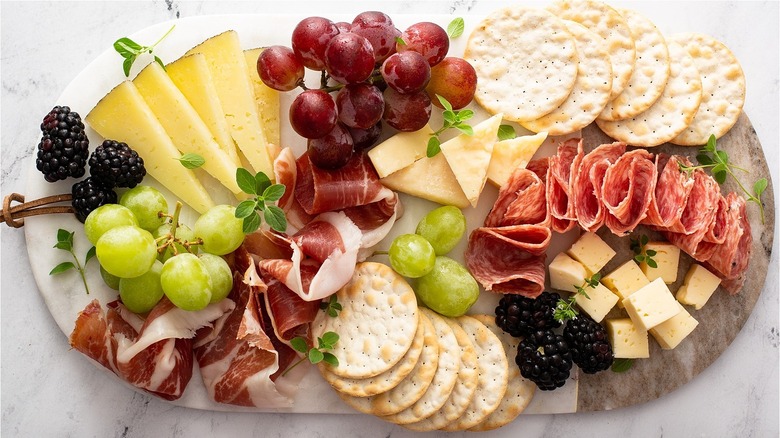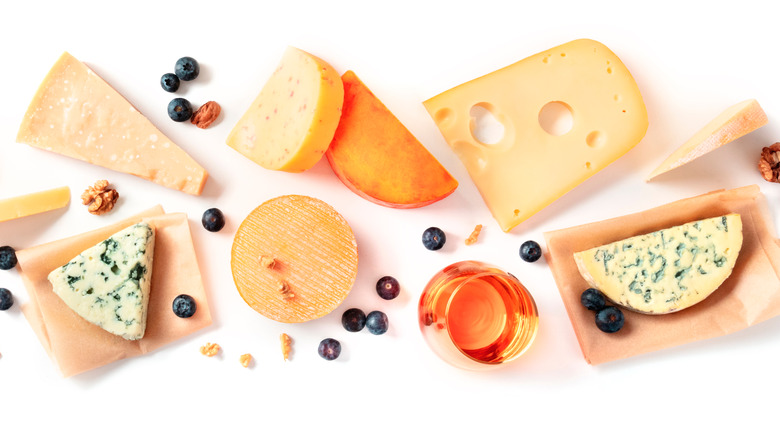The Charcuterie Board Cheese Rule You Should Know About
Charcuterie boards have been all the rage in recent years. These artfully-arranged platters of meats and cheeses seem designed for the Instagram generation and make for easy entertaining. A growing interest in artisan foods has also helped to fuel their popularity, notes Business Insider. And, as Go Fit Jo points out, charcuterie boards can also be an easy way to entertain friends on low-carb or keto diets.
"Charcuterie" is the French term for "cooked flesh" (via Foodicles). It became widely adopted in 15th century France to refer to pork butcher shops that sold salted and smoked meats.
A charcuterie board is an appetizer platter — usually a wooden board, but it can be any sort of plate — composed of cured meats and cheeses, as well as accompaniments like fruits, nuts, dips, vegetables, spreads, olives, and crackers. Just as it is important to have a variety of easily sliced meats, such as salami, prosciutto, soppressata, chorizo, and even a pate, it is also important to have a wide variety of cheeses.
Cheese variety is key to a successful charcuterie board
According to Home Made Simple, charcuterie boards should have a variety of cheeses to complement everything else on your board. There are four categories that should be represented.
The first type of cheese to make a balanced charcuterie board is something aged. These cheeses are typically very firm in texture and have a sharp flavor. Examples (from Home Made Simple and Wisconsin Cheese) include aged cheddar, and aged gouda, and asiago. To contrast the hard cheeses, be sure to include some soft varieties as well, like goat cheese, Brie, camembert, and burrata. Splitting the difference between the hard and soft categories are firm cheeses, defined by Home Made Simple as those that have a "bounce" to them: gruyere, manchego, comte, colby, and edam, to name a few.
According to Wisconsin Cheese, you can add even more variety to your charcuterie board with semi-soft cheeses, including havarti, butterkäse, and muenster. Finally, include something blue. Rich and pungent, these spotted or veined cheeses include gorgonzola, dunbarton blue, marbled blue jack, Roquefort, and stilton.
Some final advice for charcuterie cheeses: You should purchase between two and five ounces of each variety per person. Provide separate knives for each cheese to keep the flavors separated. Finally, remove your cheese from the refrigerator at least 30 minutes before serving, as Wisconsin Cheese notes that the flavor of cheese is most pronounced at room temperature.

